#Dog Nutrition Tips
Text
Is Fresh Food for Dogs Worth the Hype?
Have you ever wondered if feeding fresh food to your dog is really worth it? We’ve all heard how fresh, whole foods can improve our health, but what about our furry friends? As pet owners, we want to make the best choices for our dogs, but sometimes it feels overwhelming. Fresh food sounds great, but is it too expensive? Will it take too much time to prepare? And how do we know if it’s really better than commercial dog food?
Why Consider Fresh Food for Your Dog?
Many of us have already made the switch from fast food to fresh, wholesome meals for ourselves. We see the benefits: more energy, better digestion, and overall improved health. But our dogs have been eating the same kibble for years. You might be thinking, “Isn’t commercial dog food good enough?” Let’s explore why fresh food could be a game-changer for your dog’s health.
The Drawbacks of Commercial Dog Food
Commercial dog food is convenient, but it’s not always the best choice for your dog’s health. Most kibble is cooked at high temperatures, which destroys many of the nutrients your dog needs. These foods often contain preservatives, artificial chemicals, and low-quality meat by-products. Even organic varieties can lack essential nutrients due to the processing methods used.
Imagine if you ate nothing but French fries and chips every day. You’d survive, but you wouldn’t thrive. The same goes for your dog. Processed food might keep them alive, but it won’t help them reach their full potential.
10 Reasons to Switch to Fresh Food
1. Prevent Diseases: Fresh food is rich in high-quality protein and antioxidants that boost your dog’s immune system, helping prevent diseases. Studies show that dogs fed leafy and yellow vegetables are less likely to develop urinary bladder carcinomas.
2. Improve Digestion: Fresh fruits and vegetables provide essential nutrients that support healthy digestion. Foods like yogurt and wheatgrass can detoxify your dog’s system and regulate bowel movements.
3. Manage Weight: Fresh food, high in nutrients and fiber, helps your dog feel full without consuming too many calories, reducing the risk of weight gain and related ailments.
4. Enhance Cognitive Function: Antioxidant-rich fresh food supports brain health, making your dog smarter and more alert.
5. Increase Lifespan: Dogs fed fresh food live longer. One study showed they lived an average of 13.1 years compared to 10.4 years for dogs fed processed food.
6. Strengthen Bones: Foods rich in calcium and phosphorus, like chicken bones, carrots, and quinoa, support strong bones and overall health.
7. Improve Coat Quality: Fresh food with zinc and essential fatty acids can make your dog’s coat shinier and healthier, reducing itching and skin problems.
8. Reduce Vet Visits: A nutritious diet strengthens your dog’s immune system, leading to fewer trips to the vet.
9. Boost Energy Levels: Fresh, easily digestible food provides the energy your dog needs to stay active and playful.
10. Peace of Mind: Knowing you’re feeding your dog the best possible diet gives you peace of mind, knowing you’re supporting their long-term health and happiness.
Make the Switch Today
Transitioning to fresh food might seem daunting, but the benefits far outweigh the challenges. You’ll see improvements in your dog’s health, energy, and overall well-being. Plus, fewer vet visits mean you could save money in the long run.
Ready to learn more about how fresh food can transform your dog’s health? Visit Yuvaap for more tips, recipes, and expert advice on making the switch to fresh food for your beloved pet. Your dog deserves the best, and so do you!
0 notes
Text
Unveiling the Importance of a K9 Nutritionist: Your Ultimate Guide to Optimal Dog Health
Introduction:
When it comes to our furry friends, ensuring they receive the best nutrition is paramount for their overall health and well-being. Just like humans, dogs require a balanced diet tailored to their specific needs. This is where a K9 nutritionist steps in. In this comprehensive guide, we’ll delve into the vital role of a K9 nutritionist and how their expertise can lead to happier,…

View On WordPress
#best dog food#best dog nutrition#dog#dog food#dog food recipe#dog food review#Dog Nutrition#dog nutrition class#dog nutrition course#dog nutrition food#dog nutrition free course#dog nutrition homemade food#dog nutrition lessons#dog nutrition series#dog nutrition tips#dog nutrition video series#dog nutritionist#dog nutritionist lessons#dogs#health#healthy dog food#homemade dog food#learn about dog nutrition#nutrition#pets#raw dog food#the dog nutritionist
0 notes
Text

Self Care & Wellness
#beauty#health#biophilia#skin care#biophilia nutrition#health and wellness#biophilianutrition#nutrition#wellness#self care#self care routine#self care sunday#self care tips#beauty and wellness#wellness tips#wellbeing#pets#dogs#puppy#vogue beauty#vogue#vogue magazine#vogue italia#vogue paris#vogue korea#vogue uk#vogue us#vogue japan#cartier#fashion
16 notes
·
View notes
Text
5 Tips to Keep Your Dog Warm in the Winter

Invest in doggy outerwear - sweaters, hoodies, jackets, vests, even shoes! There's a whole market of pet clothing nowadays.
One of our favorite brands of K9 outerwear is Canada Pooch

It's important to note that not every dog's coat may be enough to keep them warm in the winter - especially puppies, small or hairless breeds, elderly dogs, or those with health issues. Just like with people, pets' cold tolerance can vary based on their coat, body fat stores, activity level, and health. Pets with heart disease, kidney disease, or metabolic diseases like diabetes and Cushing's might also have a harder time regulating their body temperatures.

Protect your dog's paws when it's snowing. Boots can help minimize contact with the ground and prevent snow and ice from getting lodged between their toes and causing frostbite. Like chapped lips, cracked paws can be annoying and painful, and built up snow and ice can irritate their sensitive skin between their toes.

It might feel awkward at first for some dogs, so try to use positive reinforcement as they try to adjust to wearing their boots. Offer high-reward treats so they can learn to associate good things with their boots - when the boots are on, good things are going to happen! :)
youtube
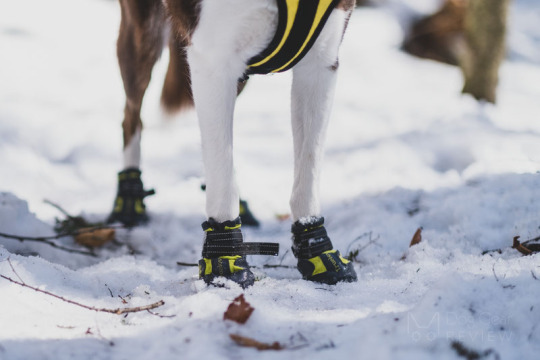
If boots still don't feel right for your dog, you can try applying paw balm or petroleum jelly-based products like Musher's Secret to keep your dog's paws safe and moisturized.

Just always be sure to wipe down and clean your dog's paws thoroughly with with a warm cloth when they come back inside. Sometimes salt and anti-freeze are put on sidewalks and driveways, which can cause chemical burns on your pet's paw pads or gastrointestinal issues if they try to lick it off.
Limit their time outdoors. Winter walks aren't always so magical. Know your dog's limits and shorten their walks if needed. If you can, reserve walks for the warmest parts of the day.
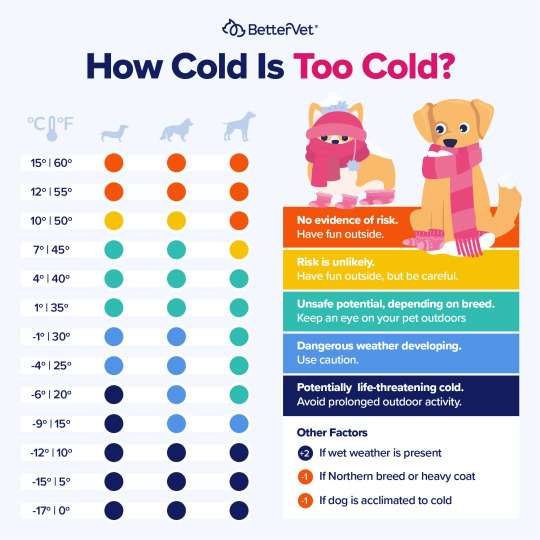
Signs to tell if your dog is too cold:
- Shaking, shivering, or trembling
- Hunched posture with tail-tucking
- Slowing down or reluctant to walk/move
- Lifting their paws off the ground
- Whining or barking
- Ears and nose feel very cold to the touch
Even if you decide to leave your dog in the car while you run an errand, it can still be dangerous if they are left for too long without any heat support when its below 30 degrees F outside. While cars can trap blazing temperatures in the summer and open risk for heatstroke, they can also trap freezing temperatures in the winter and open risk for hypothermia. Perhaps try to sit in your car without a jacket and see how long you can bare waiting in there without the heater on.

Provide choices! Give your dog more options for comfortable sleeping places with varying levels of bedding and blankets, in case they need to change their location for more or less warmth.

Set up cozy, wet-proof areas outdoors with heating lamps and wind barriers. Make sure kennels and igloos/houses are well-insulated and have enough space for them to walk in, turn around, and comfortably lay in.
youtube
Unless you have a healthy conditioned sled dog, I would not recommend letting them spend the night outdoors in the snow, without proper shelter and heat support. Watch how cold it can get in a simple dog house:
youtube
Serve warm food and water. At minimum, aim to make sure whatever they consume is at room temperature - but preferably just above their body temperature (101-103 F) when it's especially cold. Warming their food will also bring out their aroma and make it more enticing for them to eat.
If feeding kibble/dry or dehydrated, you can mix in some warm bone broth. If it's canned/wet food, avoid microwaving for too long, as this can make the food too hot and potentially deplete its nutrients. Instead, try warming up your dog's wet food with this technique:
As for home-cooked/fresh food, the Balance It Canine Plus supplement not only makes your dog's complete and balanced, but is actually formulated to withstand reheating/microwaving. Our personal favorite!
Below is a tutorial on how to utilize the Balance It system:
youtube
When selecting ingredients for your dog's food in the winter, consider including "warming" foods according to TCVM food energetics. Examples of these would be meats like lamb, goat, or venison, and vegetables and starches like sweet potatoes and oats.
Traditional Chinese medicine teaches that hot/warm food nourishes the body by bringing heat which improves circulation. To support this theory, some studies have found that food associated with heat consists of compounds that are on average lower in molecular weight, yet higher in protein and fat - which contribute to energy production, and magnesium and potassium - which contribute to blood pressure and nerve function.(https://www.sciencedirect.com/science/article/pii/S2666154320300247)
Here is a list of some hot/warm commercial pet food and treats:
- SideBySide Pet "Warming"
- Dr. Judy Morgan's Fire Element Diet
- Pet Tao "Blaze" Freeze Dried Raw Formula
- JustFoodForDogs Venison & Squash Recipe
- JustFoodForDogs Lamb & Rice Recipe
For more information on food energetics, watch this video:
youtube
4 notes
·
View notes
Text
Boxer Dog Health Common Issues and Preventative Care
Learn about the most common health concerns that affect Boxer dogs and discover preventive measures to keep them in top shape.
Boxers are known for their loving personalities and loyalty. But what you may not know is how important preventative care is for keeping your Boxer healthy. As your trusted companion, it’s essential to be aware of the common health issues that can afflict a Boxer and what preventative measures you can take to ensure your Boxer stays healthy and happy.
In this guide, we’ll explore the boxer’s…

View On WordPress
#Boxer dog common issues#Boxer Dog Health#Boxer dog health care tips#Boxer dog health maintenance#Boxer dog health problems and solutions#Boxer dog healthBoxer dog common issues Boxer dog preventative care Boxer dog health problems Boxer dog health tips Boxer dog care guide Box#Boxer dogs Pet care Training Health Nutrition Breed characteristics Boxer puppies Exercise Grooming Socialization
2 notes
·
View notes
Text
Antioxidants in CBD for Dogs
Full-spectrum hemp CBD has a number of proven advantages, including pain relief, reduced anxiety and depression, and anti-inflammatory properties. And, CBD has been scientifically proven to have antioxidant properties.
You may have heard the word “antioxidant” before, particularly when looking for skin care products or making dietary changes, but you may not be aware of what it means from a…

View On WordPress
#antioxidants#Antioxidants For Dogs#canine nutrition#Canine Wellness Tips#Cannabinoid#cannabis#cbd#cbd for dogs#cbd oil#dog#dog diet#dog lovers#dogs#hemp oil#nutrition#Wellness#Wellness Tips
0 notes
Text
Understanding the Causes of Bacterial Skin Infections in Pets
Bacterial skin infections are common in pets and can cause significant discomfort and health issues. Understanding the causes of these infections is crucial for effective prevention and treatment. At Tri-County Animal Hospital, we are committed to helping pet owners understand the underlying factors that contribute to bacterial skin infections in pets and providing comprehensive care for their furry friends.

Common Causes of Bacterial Skin Infections
Allergies
Allergies are a major cause of bacterial skin infections in pets. Pets can be allergic to various environmental factors such as pollen, mold, dust mites, and certain foods. When a pet has an allergic reaction, their skin becomes inflamed and itchy, leading to scratching and biting. This can create open wounds and sores, which provide an entry point for bacteria.
Hormonal Imbalances
Hormonal imbalances can also lead to bacterial skin infections. Conditions such as hypothyroidism (low thyroid hormone levels) and Cushing's disease (overproduction of cortisol) can compromise the skin's natural barrier, making it more susceptible to infections. Pets with these conditions often have dry, flaky skin, which can crack and allow bacteria to enter.
Poor Hygiene and Grooming
Inadequate grooming and poor hygiene are significant contributors to bacterial skin infections. Pets with matted fur or those that are not bathed regularly can develop skin irritations and infections. Regular grooming helps remove dirt, debris, and dead skin cells, which can harbor bacteria. At Tri-County Animal Hospital, we emphasize the importance of maintaining a proper grooming routine to prevent skin issues.
Environmental Factors
Environmental factors such as humidity, heat, and exposure to irritants can lead to bacterial skin infections. Warm and moist environments provide an ideal breeding ground for bacteria. Pets that spend a lot of time outdoors or in areas with high humidity are at a higher risk. Additionally, exposure to irritants like chemicals, pesticides, and certain plants can damage the skin and make it more prone to infections.
Breed Predispositions
Some breeds are more prone to bacterial skin infections due to their genetic makeup. Breeds with skin folds, such as Bulldogs and Pugs, are particularly susceptible because moisture and bacteria can accumulate in the folds. Breeds with long or dense fur, like Golden Retrievers and Shih Tzus, are also at higher risk due to the difficulty in keeping their skin clean and dry.
Underlying Health Conditions
Underlying health conditions can weaken a pet's immune system and make them more vulnerable to bacterial skin infections. Diabetes, autoimmune diseases, and cancer can all compromise the immune system, reducing the body's ability to fight off infections. Pets with these conditions require special attention and care to prevent secondary infections.
Preventing Bacterial Skin Infections in Pets
Prevention is key to managing bacterial skin infections in pets. Here are some tips to help keep your pet's skin healthy:
Regular Grooming
Regular grooming is essential for preventing bacterial skin infections. Brush your pet's fur to remove dirt and debris, and bathe them with a gentle, pet-safe shampoo. Pay special attention to areas with skin folds and ensure they are clean and dry. At Tri-County Animal Hospital, our grooming services are designed to keep your pet's skin and coat healthy.
Proper Nutrition
A balanced diet plays a crucial role in maintaining healthy skin. Ensure your pet is getting the right nutrients, including omega-3 and omega-6 fatty acids, which are essential for skin health. If your pet has food allergies, work with your veterinarian to identify and eliminate the offending ingredients from their diet.
Environmental Control
Minimize your pet's exposure to environmental irritants and allergens. Keep your home clean and free of dust, mold, and other potential allergens. During high pollen seasons, limit your pet's outdoor activities. If your pet spends a lot of time outside, ensure they have a clean and dry resting area.
Regular Veterinary Check-ups
Regular check-ups with your veterinarian are crucial for early detection and prevention of bacterial skin infections. Your vet can identify underlying health conditions, recommend appropriate treatments, and provide guidance on maintaining your pet's skin health. At Tri-County Animal Hospital, we offer comprehensive wellness exams to ensure your pet stays healthy and happy.
Addressing Health Conditions
If your pet has an underlying health condition, work closely with your veterinarian to manage it effectively. Proper management of conditions like diabetes, hypothyroidism, and Cushing's disease can significantly reduce the risk of bacterial skin infections.
When to Seek Veterinary Help
If you notice any signs of a bacterial skin infection, such as redness, swelling, sores, or excessive itching, seek veterinary help immediately. Early intervention can prevent the infection from spreading and causing more severe health issues. Tri-County Animal Hospital is here to provide the necessary care and treatment for your pet, ensuring they recover quickly and comfortably.
Conclusion
Understanding the causes of bacterial skin infections in pets is essential for effective prevention and treatment. By addressing underlying factors such as allergies, hormonal imbalances, and environmental conditions, pet owners can help keep their pets healthy and infection-free. Regular grooming, proper nutrition, and routine veterinary care are key components of a proactive approach to skin health. At Tri-County Animal Hospital in Wayne, we are dedicated to providing the best care for your pets, ensuring they live happy, healthy lives.
#Bacterial Skin Infections#Pet Health#Pet Care#Dog Skin Infections#Cat Skin Infections#Pet Allergies#Veterinary Care#Pet Grooming#Pet Hygiene#Tri-County Animal Hospital#Skin Health for Pets#Preventing Pet Infections#Pet Nutrition#Pet Wellness#Veterinary Tips
0 notes
Text
Yes, turmeric is generally safe for dogs when given in appropriate doses. This ancient spice, known for its vibrant yellow color and powerful anti-inflammatory properties, can offer numerous health benefits for our canine companions.
Read full article.
#healthy food#nutrition#health#healthy#scientific research#research#healthy eating#vitamins#supplements#health products#natural health#nutritious#fitness#workout#health education#nutrition tips#turmeric benefits#turmeric#dog#dog health#pet health#pet care#dog food#pets
0 notes
Text
Cooking Canine Cuisine: Essential Tips for Homemade Dog Food Success
We all want to do what’s best for our families, dogs and other animal family members included. Lately, there has been a lot of controversy on social media about manufactured foods, illnesses and recalls. While this article won’t get into those details, what I have noticed is a major influx of dog guardians turning to homecooked and raw foods for their furry family members.
Affiliate…
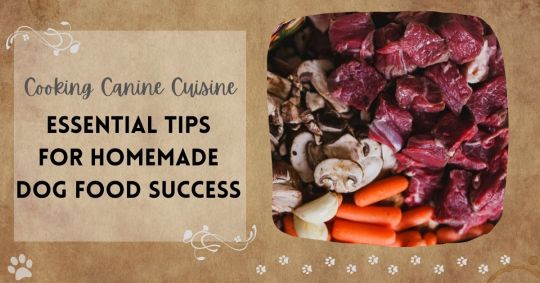
View On WordPress
#Balanced Canine Meals#batch cooking for dogs#Cooking Techniques for Dogs#DIY Pet Nutrition#Dog Food Recipes#Dog Food Storage Tips#Dog Meal Prep#dog nutrition#Dog-friendly Cooking#High-Quality Dog Food#homemade dog food#Nutritional Tips for Dogs#Tips for making dog food
0 notes
Text
5 Key Health Checks for Your Dog to Start Off 2024 Right
Kick off 2024 with your dog's best health in mind! 🐕💥 Our guide covers everything for a thriving year. From diet to fitness, we've got it all. Read, apply, and enjoy a healthy year with your pup! #HealthyDog2024 #NewYearNewPup #DogWellness
Welcoming a New Year is the perfect time to ensure your beloved dog’s health is in top shape. Just like us, our canine companions need regular health checks to maintain their well-being. This guide will walk you through five essential health checks to start the year right for your furry friend.
1. Annual Veterinary Check-Up
The cornerstone of maintaining your dog’s health is a comprehensive…

View On WordPress
0 notes
Text

BFF Life
#beauty#biophilia#health#self care#biophilia nutrition#biophilianutrition#skin care#nutrition#wellness#health and wellness#pet#pets#dog#dogs#bff#bffs <3#best friends#chic interiors#interior architecture#interiors#interior decor#minimalist#minimalism#fashion#style#self care routine#self care sunday#self care tips#wellness journey#beauty and wellness
6 notes
·
View notes
Text
How to Enhance Your Dog's Joint Health

Arthritis refers to the inflammation of one or more joints. In a healthy joint capsule, cartilage protects bones where they meet by providing cushion, while synovial fluid acts as a lubricant to reduce friction when the bones glide against each other.
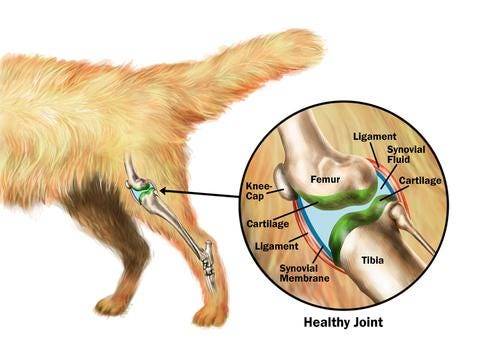

However, after strenuous activity and repeated motion of the joints, or any trauma to the area, the cartilage and synovial fluid tends to thin over time, allowing the bones to rub against each other and cause pain. Inflammation and swelling builds within the joint capsule, leading to stiffness and issues with mobility. As the inflammation persists, certain chemicals and enzymes may be released that begin to further eat away at the cartilage and sometimes the bone.
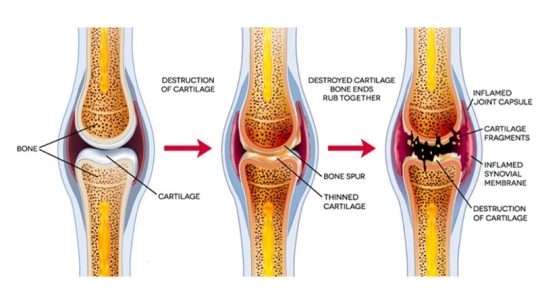

A snowball effect can tend to follow as a dog becomes less active or more reluctant to move due to arthritic pain, leading to weight gain and putting even more pressure on the joints. While arthritis can’t be cured and is almost inevitable with any active aging dog, there are many ways pet owners can try to prevent its progression, including over-the-counter joint supplements and healthy weight management through nutrition.
A recent study by NC State University reported that 40% of 123 healthy dogs between the ages of 8 months and 4 years had radiographic evidence of arthritis on at least one joint - and from that, 24% showed associated pain. More interestingly, 57% of those dogs who had exhibited any arthritis-associated pain had owners who claimed they were aware something was wrong with their pet, yet only 13% of them were receiving any form of pain management or joint support.


Perhaps this is due to a common misconception that arthritis is only a problem found in older dogs. Despite many senior pets suffering from arthritis, it is a degenerative - not age-related - disease. Other risk factors that may contribute to joint deterioration, including genetics, heavier body weight, activity level/exercise, neuter status, as well as diet. Arthritis may typically develop secondary to a musculoskeletal disorder - like hip or elbow dysplasia, or luxating patella - but may also be caused by trauma or infection.

Symptoms of Arthritis:
Lameness or limping
Decreased activity
Inability or reluctance to jump
Stiffness
Difficult climbing stairs
Changes in behavior (less social)
Compulsive licking of the joint(s)
While these symptoms might seem like an obvious indicator of pain or discomfort, recall that not every dog may exhibit these signs. An x-ray, however, may confirm arthritis by displaying the presence swelling of tissue around the joint, increased fluid within the joint, or even changes to the bone such as thickening or spurs.
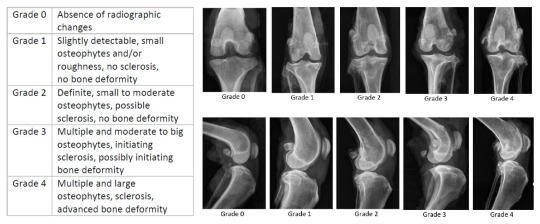

More advanced imaging like CT scan or MRI may help to diagnose an underlying cause of the arthritis by assessing the bone structure and surrounding tissues. A joint tap can also be used to assess the fluid if an infection or autoimmune disease is suspected.


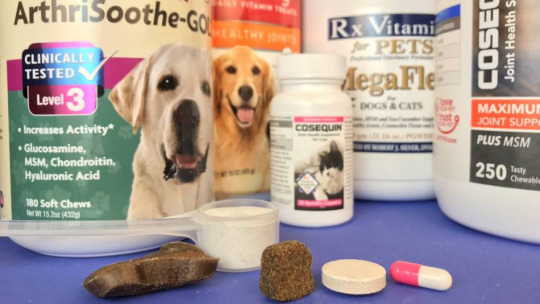
Today, there are many products available on the market that are geared towards supporting our dogs’ joints - many of which will claim to cure or even prevent arthritis altogether. On the contrary, most nutraceuticals will usually take several weeks to months before reaching therapeutic levels. Due to the lack of regulation on pet products, it can be easy for owners to fall for such marketing and have difficulty determining which product is best for their pets.
Here is a useful podcast that reviews tips on choosing quality pet supplements:
Vetfolio - “Advancing Gracefully with Joint Supplementation”
“Dr. Leilani Alvarez joins Vet Folio Voice to explain the importance of using a canine joint supplement at any stage of life, when needed. She offers insight into the role of evidence-based ingredients, how they can work together to support hip and joint health, and why the quality seal from the National Animal Supplement Council (NASC) can signal the best products for your practice.”
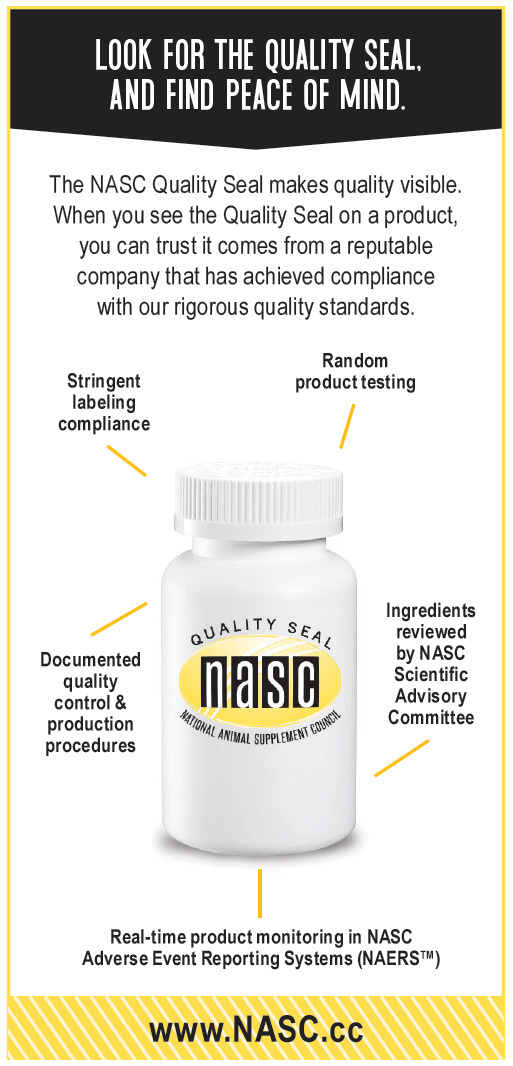
Aside from having an NASC seal on its label, it would be even more credible if the pet product company has been in business for at least 10 years - assuming the company has had great success and testimonials thus far, along with the financial stability and willingness to recall products voluntarily, if and when a fault was found.
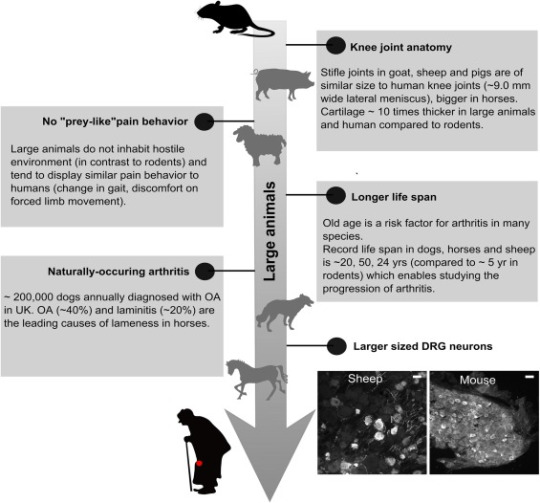
Another important to detail to look out for in determining the efficacy of a joint supplement is to see if the product has actually been tested on live animals with naturally-occurring arthritis (i.e. not induced arthritis, or on samples in a Petri dish). It is also worth considering if experiments were done on the same species as the one it is intended for use - just because a study showed efficacy on arthritis found in humans, may not mean it will have the same efficacy with dogs.
Effective Ingredients/Nutraceuticals:

Fish oil - preferably sourced from wild-caught cold water fish - contains high concentrations of EPA/DHA, and is currently the nutraceutical with the most supporting evidence in literature towards managing canine arthritis. Eicosapentaenoic acid (EPA) and docosahexaenoic acid (DHA) are major components of the anti-inflammatory process within the joint capsule. These polyunsaturated fatty acids are essential to dogs - they cannot be synthesized in the body, so must be provided in the diet. A 2010 study suggested that OFA supplementation may allow for reduction in NSAID use for treatment of osteoarthritis in dogs.

Green lipped mussel is a shellfish from New Zealand that obtains its nutrients from phytoplankton minerals in sea water. It is another natural source for OFA - specifically eicosatetraenoic acid (ETA), which can’t be found in other common oily fish. Unlike EPA and DHA, ETA not only has anti-inflammatory properties, but has also been shown to block certain pathways for short-term pain.

Egg shell membrane, normally a protective layer over a growing embryo, contains high levels of glucosamine, chondroitin, collagen, and hyaluronic acid. These are utilized to support connective tissue repair, helping to improve function muscular function and diminish soft tissue pain that may be a source of overcompensating for a joint injury.

Boswellia serata, also known as “Indian frankincense” is a plant native to India, Africa, and the Arabian peninsula. In 2004, a group of dogs with confirmed joint disease in Switzerland received Boswellia extracts at a dose of 40mg/kg once daily for 6 weeks. After two weeks, 71% showed significant reduction in severity of lameness and stiff gaits - dogs had less difficulty while moving, as well as when getting up after a long rest.

Astaxanthin is a red pigment that can be found in salmon and red marine algae. It is an antioxidant which protects cells from damage and inflammation, helping to boost overall immunity and energy. There have been previous studies which showed that astaxanthin contributes to restoration of bone homeostasis, showing potential for counteracting joint injuries.
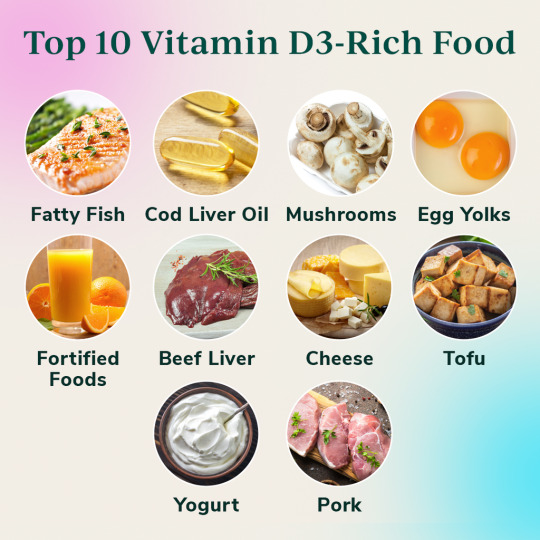
Vitamin D3 is important for supporting healthy bone structure, including the subchondral bone. Dogs cannot absorb Vitamin D3 from the sun the way humans do, so is typically absorbed from dietary sources.
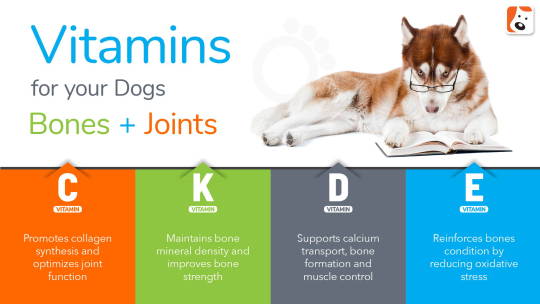
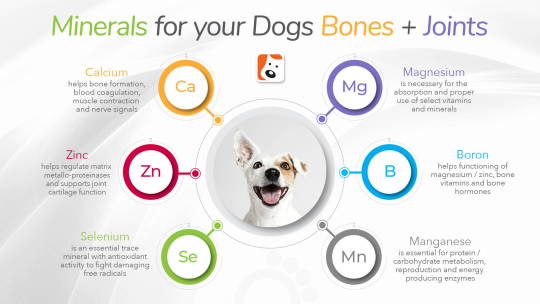

Cannabidiol (CBD) oil, although extracted from the hemp plant, should not be confused with hemp oil. Further, it cannot legally cannot contain more than 0.3% THC, or otherwise make your dog high. Depending where you live, you may not even be able to find or purchase such products for your pet. Although it is still a very controversial ingredient in some areas, it may still work as an anti-inflammatory by interacting with pain receptors through the endocannabinoid system. A study done in 2018 showed that CBD oil administered at 2mg/kg twice daily can help reduce pain and increase activity in dogs with arthritis. However, owners should make sure to avoid purchasing CBD pet products that do not have the NASC seal - those that have not been stamped may contain heavy metals like lead or not be appropriately labeled to display its proper dose.
Dr. Sarah Wooten, veterinarian and certified canine rehabilitation and pain practitioner, reviews a few more commonly suggested ingredients for joint health in this article -
“Joint Supplements for Dogs: The Helpful vs. The Hype” https://www.dvm360.com/view/joint-supplements-dogs-helpful-vs-hype
***For further reading on up-to-date studies on canine nutraceuticals for arthritis, visit: https://www.vin.com/apputil/project/defaultadv1.aspx?pid=22915&catid=&id=8896849&meta=&authorid=
Favorite/Recommended Products:
Virbac “Movoflex Advanced” —- contains all the ingredients listed above and what I currently offer my own dog (Blanca just turned 8 and still has the energy and mobility of a puppy)
Dechra “Phycox HA Max” —- made with hydrolyzed protein, good for dogs with IBD or sensitive stomachs; contains phycocyanin, an antioxidant found in blue spiraling, which they have patented (no other product has this ingredient)
Nordic Naturals “Omega-3 Pet” — probably the most popular fish oil for dogs; affordable, comes in either oil or gel capsules, FOS (Friend of the Sea)-certified product
VRS “Omega Benefits” —- high-quality fish oil used in two of the largest, double-blind, placebo-controlled clinical studies for both joint and skin health; also has a hydrolyzed protein formula as well as a formula for puppies
Standard Process “Canine Musculoskeletal Support” —- popular product recommended by my holistic vet; main ingredients are boswellia and green lipped mussel, but also contains some organic beet (astaxanthin), bovine offal including trachea (collagen), and shiitake and reishi mushroom for immunity
InClover "Connectin" --- best quality joint supplement found at one of our local favorite pet stores (Pet Food Express); main ingredients are glucosamine, choindritin, and Hyaluronic Acid, along with some other interesting herbs, available in chewables/tablets and powder form; clinically proven to work (https://inclover.com/wp-content/uploads/2019/03/Connectin-White-Paper.pdf)
Nutramax “Cosequin”—- affordable, widely available (I’ve even seen these at Walmart); also clinically proven to work (https://www.nutramaxlabs.com/downloads/Cosequin-Studies.pdf)
VetriScience “Glycoflex” —- clinically proven (http://glycoflex.com/wp-content/uploads/2015/12/VSD57-ClinicalResearchSt.pdf), multiple versions available for different stages of joint disease and comes in bacon, duck, or peanut butter flavors
Vetoquinol “Flexadin Advanced w/ UC-II” —- clinically proven to be 50% more effective than glucosamine-chondroitin and actually works similar to an Onsior, which is an injectable NSAID (https://www.ncbi.nlm.nih.gov/pmc/articles/PMC8956235/)
Myos “Muscle & Joint Formula” —- contains their patented Fortetropin, derived from fertilized chicken egg yolks that is packed with nutrients; some dogs might also find this smelly powder enticing and be good for those with poor appetite; clinically proven to work, and also prevent muscle wasting after a TPLO/knee surgery (https://myospet.com/pages/clinical-studies)
“Antinol” - contains PCSO-524, a patented lipid extract isolated from green lipped mussel; clinically proven not only to be effective in dogs, but humans as well (https://antinolstudies.com/antinol-pcso-524-executive-summary/)
ThorneVet “CurcuVET” —- more research needs to be done on curcumin’s effect on arthritis in dogs, yet this product has still been shown to work nonetheless (https://www.ncbi.nlm.nih.gov/pmc/articles/PMC8162585/)
ElleVet Hemp CBD + CBDA Chews - studies conducted by Cornell University - the first ever successful clinical trial on canines with arthritis, the first pharmacokinetic study, as well as the first safety study (https://www.ellevetsciences.com/cbd-science/); chews have a 98% acceptance rate for palatability; and also big kudos to their non-profit organization they developed to provide free veterinary care to homeless pets

Some dogs, unfortunately, may not be able to tolerate some of these supplements that add higher levels of fat to their diet (i.e. those prone to pancreatitis, or that have trouble with weight gain). Instead, they might benefit from a prescription diet that contains higher levels of OFA, yet still lower levels of fat within the complete formula.
Prescription Diets:
JustFoodForDogs Joint and Skin Support
Royal Canin Advanced Mobility
Hill’s j/d Joint Care
Hill’s j/d Mobility
Hill’s Metabolic + Mobility
Purina JM Joint Mobility
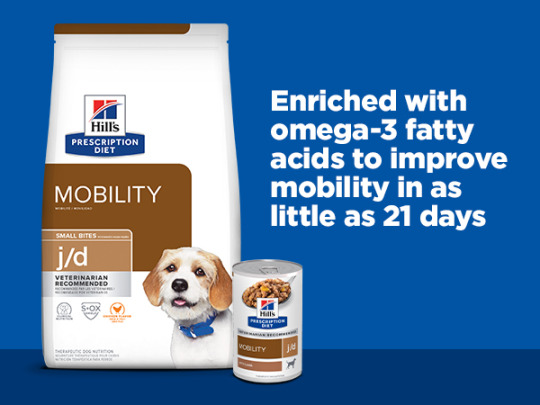
Ask your veterinarian if any of these pet foods or supplements are appropriate for your dog. In the meantime, here’s a video of how to give proper massages to your dog to help alleviate their joint pain :)
youtube
#canine#canine health#joint care#arthritis#osteoarthritis#nutraceuticals#omega3#pet supplements#pet products#dog tips#veterinary medicine#nutrition#integrative medicine#physical rehabilitation#Youtube
0 notes
Link
🐾🦴 Ready to pamper your pup with the healthiest, tastiest treats? Look no further! Join us on a journey to discover the Top 10 Healthy Dog Treats your furry friend will adore. Keep those tails wagging and their well-being thriving! 🐶💕
#dog#dogs#dog treats#healthy dog treats#healthy dog#healthy pet#healthy pets#dog health#pet health#dog nutrition#dog tips#dog care#poochwell#dog diet#dog wellness#puppy food#dog lover#doglover
0 notes
Text
Paw-sitively Perfect Play: How to Choose the Right Toys for Your Dog
Dogs are not just pets; they’re beloved members of our families who bring boundless joy, loyalty, and a wagging tail to our lives. Just like humans, dogs need proper mental and physical stimulation to stay healthy and happy. That’s where toys come in! But with the myriad of options available, how do you choose the right toys that will keep your furry friend entertained and engaged? Fear not,…

View On WordPress
#AnimalHealth#dailyprompt-2023#dailyprompt-2024#diet and nutrition for pets#Dog Breeds#dog care#dog grooming near me#grooming tips for pets#How to care for a cat#How to care for a dog#How to care for birds#How to care for fish#How to care for rabbits#how to groom a dog#PetNutrition
0 notes
Text
Oh
#diet fitness weightloss healthy healthyfood gym health healthylifestyle nutrition motivation workout fit food bodybuilding#health#i wanna lose weight#lose weight#mens health and fitness#healthy diet#tips to lose weight#i need to lose this weight#ethniccleansediet#diet plan#dog diet#keto diet#speedketo
0 notes
Text



Daily Check-in: July 24, 2024 🎀
Ahhhh today was such a phenomenal day omg. I had a really good, mostly productive day today and I'm so happy. I still need to work on my eating and nutrition and stop letting my hotel roommate talk me into late night munching, but everything else is going so good.
🩷 What I Accomplished
35 minutes full body strength workout
30 minute treadmill walk (2.5 speed, 3.0 Incline for 19min, 3.0 speed, 3.0 Incline for 11min)
put away all my clean laundry
had a 30 min korean trial lesson on italki (loved it, love the teacher, she's awesome)
planned out my language studies and budget moving forward
booked an appointment to get my nails done once I'm back home in mid August (gonna get medium acrylics, coffin shape with a mocha brown French tip, I'm so excited)
napped for about ~3 hours, i think? I've been really tired recently
did my night time skincare routine for the first time in a week
did my night time gratitude journal, also for the first time in a while
studied Korean for about 75 minutes (not counting the italki lesson!!)
got homework from my italki teacher, super excited to work with her
called my boyfriend this morning
tried an egg, bacon, cheese, potato, and avocado breakfast bowl from a place nearby and it was so yummy and filling
remembered to take my night time meds
emailed my therapist about documentation I need for a financial aid appeal
looked for more Korean and Spanish learning resources
my dad sent me pictures of one of our dogs (a German Shepard that has my whole heart), and she's such a cutie i could cry
💔 What Could've Gone Better
need to write my financial aid appeal letter (too many credit hours, but I'm double majoring so it makes sense???)
didn't wash my laundry, need to do it tomorrow morning
ate too much again. my roommate keeps talking me into late night eating and ughhh, I gotta stop giving in
gotta make better food choices in general, and start logging my food to be more mindful
slept A LOT today, like napped before my italki lesson, napped afterward. I've been so so tired lately and I've no clue why
need to stick to a consistent routine, and prepare myself for my after work workouts for Friday thru Sunday
💗 Stuff For Thursday (July 25th)
finish paying back my friend
send money for rent to roommates back home
make a payment towards new apartment
book next Spanish and Korean italki lessons
study korean
complete my pilates full body workout from health coach plan
begin tracking what I eat to help my mindfulness around my food choices
morning and night skincare
morning and night gratitude journaling
wash my laundry before I go to work
work an ~8.5 hour evening shift
💕 Song of The Day: Who - Jimin
ughhh I love his voice, and this song, so much
til next time, lovelies 🩷
#pink pilates girl#pink pilates princess#self development#it girl#wonyoungism#mental health#self care#that girl#physical health#self love#that girl energy#becoming that girl#it girl self care#it girl energy#clean girl aesthetic#clean girl#pink moodboard#pink blog#pink aesthetic#pink academia#studyblr#langblr#uniblr#lifeblr#university student#college student#high value woman#girl blogger#health and fitness#productivity
24 notes
·
View notes